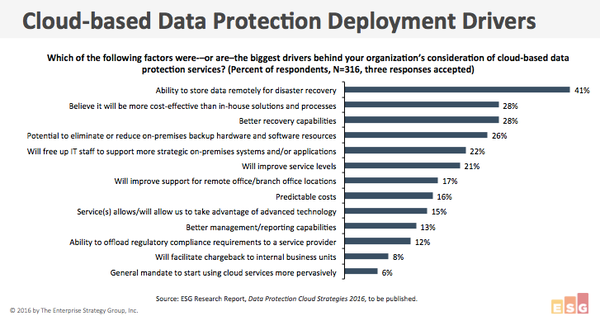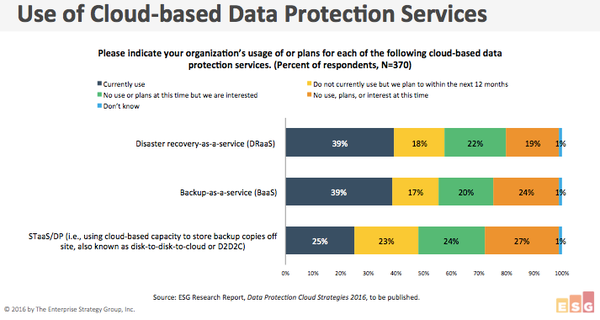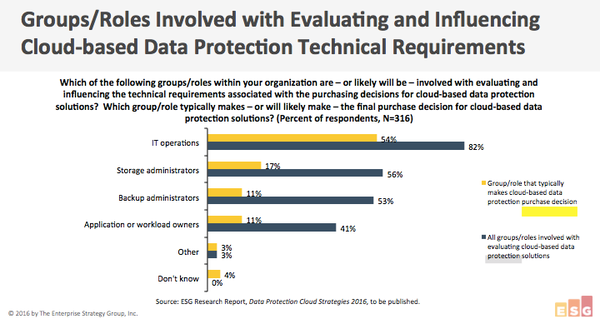Turning Data Protection Services into a Cash Cow
There are three things you need in order to turn a technology concept into a viable revenue-generating services business.
July 11, 2016

Sponsored Content
There are three things you need in order to turn a technology concept into a viable revenue-generating services business:
The market opportunity. The stars need to be aligned and momentum needs to be in your favor.
The building blocks. The vision to capitalize on enabling technology. The tight-knit plan to get you to where you need to be, and the GTM speed to get there quickly and efficiently.
Execute, automate and scale. In today’s modern era, speed-to-market has never been more important, and scale is critical to long-term business success. Think not only about how you can implement, but how can you automate.
The market opportunity
Disaster recovery (as a whole) and DRaaS continue to gain momentum with small and midsize businesses, thanks to more affordable prices and enhanced functionality. In fact, Gartner estimates the DRaaS market will nearly triple in the next three years, to a revenue point of $3.4 billion by 2019. But the growth isn’t only in small to midsize businesses. In addition, DRaaS interest has grown significantly among large enterprises during the past year, Gartner has witnessed a 77% increase in inquiries from these organizations throughout 2015.1
The building blocks
The bedrock of any BDR (backup and disaster recovery) service or data protection service comes from its backbone data protection technology–the crossroads where backup, availability and granular recoverability meet.
In addition, it is often said that companies have too much invested in their existing backup solution, or don’t want to learn a new backup UI and recreate jobs and install agents again. This means you need to align with a company that already has a strong imprint in the market–maximizing your potential piece of the pie.
To date, there are more than 11,200 cloud and service providers that entrust Veeam and have built their services businesses to be Veeam-powered. Veeam also benefits from another, possibly even more impressive, growing ecosystem: It provides on-premises backup and replication software to almost 200,000 end users worldwide. What if a technology was created where the 11,200 service providers could benefit from the 200,000 end users, and vice versa? Well, it has.
Veeam Cloud Connect provides a simple, fully integrated way for end users to get their backups and replication offsite without needing to build and maintain a secondary data center.
It also provides a tremendous business venture for service providers: a way to offer disaster recovery as a service (DRaaS) and hosted off-site backups (sometimes referred to a storage as a service for data protection, or STaaS/DP) to Veeam users looking to extend their on-premises solution to the cloud.
Execute, automate and scale
“All men dream: but not equally. Those who dream by night in the dusty recesses of their minds wake in the day to find that it was vanity: but the dreamers of the day are dangerous men, for they may act their dreams with open eyes, to make it possible.”
– T.E. Lawrence “Seven Pillars of Wisdom”
Once you’ve armed yourself with industry-leading data protection technology (hint: think green), then it’s time to roll up your sleeves and get to work. Here are a few tips to consider when targeting today’s modern data centers for BDR services:
Embrace cloud as an enabler of agility and availability. While some organizations may presume that cloud as a tape killer, today’s always-on business is not just about changing the consumption economics, but also increasing agility and availability of applications and data. Positioning cloud as a tape killer is difficult when positioning it solely on economics. Where the economics of cloud get interesting is “why BaaS when you can DRaaS”–having this data be usable, driving availability. It can’t be just be about dollars per GB; you must raise the conversation to unlock the operational value of data and the cost of downtime.

Don’t offer BaaS or DRaaS or STaaS/DP2–offer them all. In a recent ESG Research study, roughly half of all organizations either currently use cloud services (DRaaS, BaaS, STaaS/DP) as part of their data protection solution or intend to–with another 20% being interested in each of the three approaches.

It’s not just the admin or the C-level you need to be talking to. Don’t forget about IT ops. As you can see, IT operations consistently has a seat at the table (either as an evaluator or the decision maker). Ensure you have IT ops top-of-mind when you’re going after your target market.
In addition, you must be prepared for multiple conversations with multiple roles before you get to a “yes.” Consider it as more of a collective decision making process where any one person might have veto power, versus a linear approach.

Automate everything you can–then automate more. Challenge yourself to place everything through the lens of automation and scalability, for every step in the customer lifecycle. Can you automate it? Can each process scale? Look for opportunities to pool and share resources to optimize scalability and bring on new customers. In addition, look to implement self-service opportunities giving end users more control, ultimately providing your organization the ability to lower monthly services costs.
Here are two great MSPMentor resources on automation:
MSPMentor video “The Growing Importance of MSP Automation”
MSPMentor Blog post “Six MSP Problems Solved by True Marketing Automation”
Conclusion
By capitalizing on a new market opportunity with the right building blocks and speed-to-market, you can scale your business for long-term success. To learn more about how Veeam can help service providers, visit https://www.veeam.com/service-providers.html.
1Gartner, Magic Quadrant for Disaster Recovery as a Service, John P Morency, Christine Tenneson, Ron Blair, 16 June 2016.
2STaaS/dp: Adding cloud storage to an on-premises data protection solution.
 Russ Kerscher is Senior Global Product Marketing Manager for Veeam Software, a provider of Availability for the Always-On Enterprise, helping organizations meet recovery time and point objectives (RTPO) of less than 15 minutes for all applications and data.
Russ Kerscher is Senior Global Product Marketing Manager for Veeam Software, a provider of Availability for the Always-On Enterprise, helping organizations meet recovery time and point objectives (RTPO) of less than 15 minutes for all applications and data.
You May Also Like
